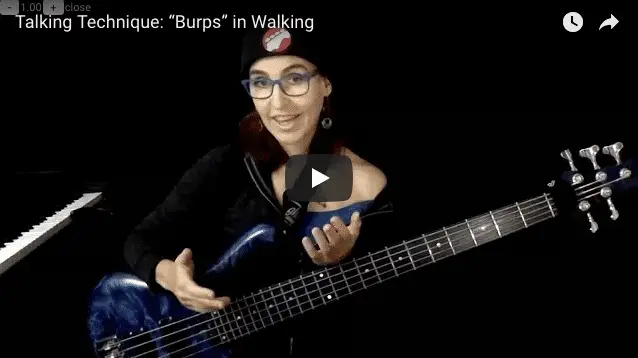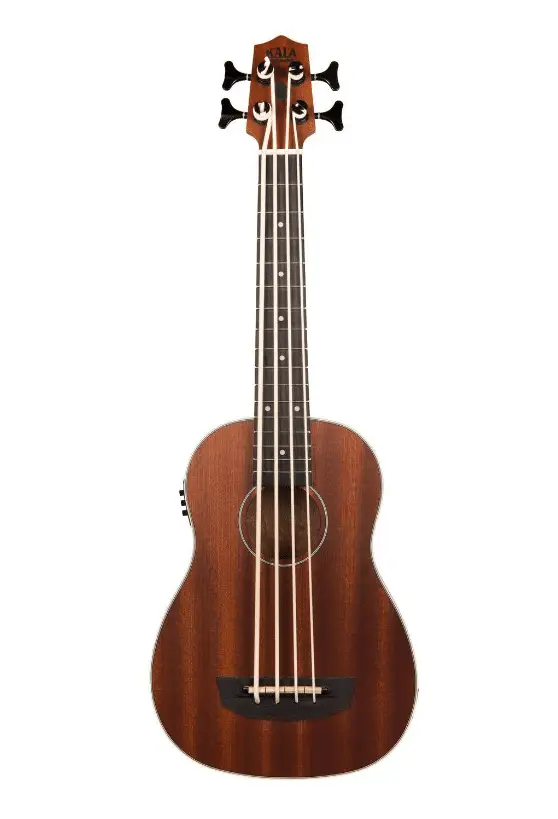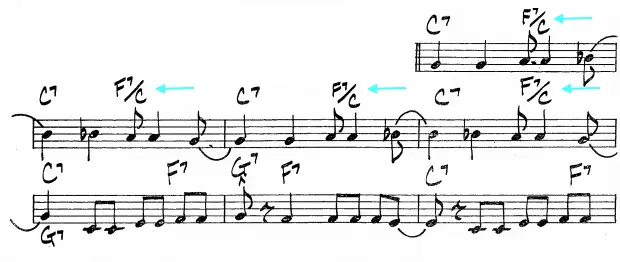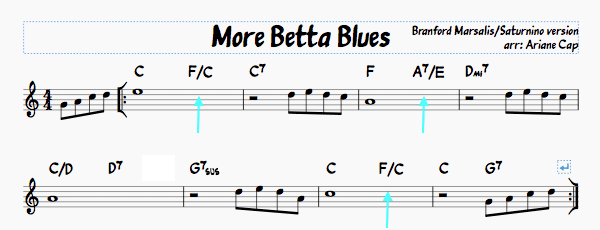The thing with the word “diminished” is, it is used in so many different contexts it can really throw one for a loop: scale? triad? four note chord? or just an interval??
To make matters worse there is no unified system of how to name chords, so when someone says Cdim, that’s a triad! But C half diminished, man, that’s a four-note chord! And then you abbreviate diminished like this: Co (three notes!) but C half-diminished like this: Cø and that is a four-note chord (AKA Cmin7b5 – give me a break!!!). There also exists a “fully diminished chord” – Co7 – which consists of four notes, that are a sequence of stacked minor thirds. Once you are familiar with these terms, though, believe me, it’s a piece of cake. And definitely worth knowing, all these chords occur in many styles of music! But cut yourself some slack if this doesn’t seem to make sense in the beginning! Here to help is a…
Synopsis of must-know items:
Diminished Intervals
Any interval can be diminished (or augmented, for that matter, which is the opposite!)
A minor interval (such as a minor third for example!) can be made diminished by making it smaller by a half step. So, the minor third C to Eb can be made diminished by doing this: C to Ebb (which sounds like D on the electric fretted bass); alternatively, you can make it diminished by raising the C to C#. C# to Eb, then, is also a diminished third. And yes, you could rename those guys to C to D or Db to Eb, which would then make them a major second. Sounds the same, but in theory terms, there is a difference depending on context (e.g. an F 7#5 chord contains this diminished 3rd: F – A – C# – Eb).
You can also make perfect intervals dim – again, just make them smaller by a half step. C to G, for example is a perfect fifth. Make the G a Gb and you get: C – Gb – a di-minished fifth! You can, again, also tackle this diminishing business by raising the lower note: C to C#, so C# – G – voila, a di-minished fifth! By the way, it is this diminished fifth that causes chords to be named diminished! (a little sneak peak to the chords section here!)
Let’s see if this clicked for you (answers on the bottom, but you try first, then compare):
- D up a dim third:
- F up a dim fifth:
- C up a dim octave:
- Dim fourth up from F:
Chords – Diminished Triad
Okay, moving on to triads that can be called “diminished”. There is only one kind of a diminished triad, and it consists of two minor thirds stacked on top of each other, which forms a diminished fifth between the two “outer” notes:
C – Eb – Gb
On the bass this looks like this (from Music Theory for the Bass Player):
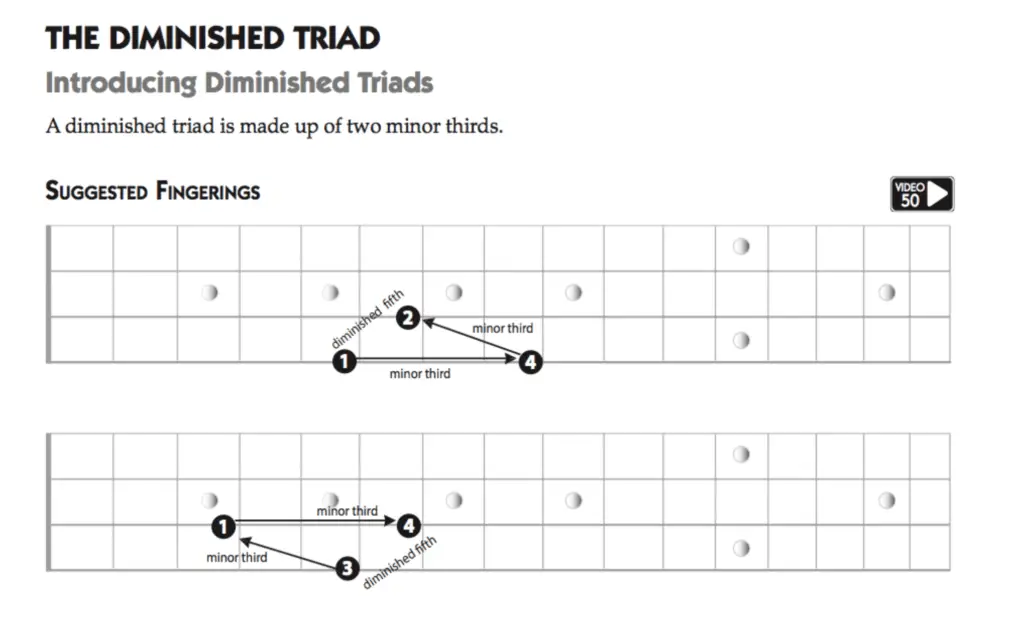
There is only one kind of a diminished triad, the one shown above. It sounds a bit dark, eerie, tense, maybe bluesy in the Blues context.
It is written like this: Co or Cdim. And this always means three notes. A triad.
Example: Co or Cdim: C-Eb-Gb
You try:
Chords – Half-diminished!
Okay, onward to the four-note chords! Depending on what I add as my fourth note above that triad, I get two common chords:
When adding a minor seventh (as seen from the root) you get this guy: Cmin7b5, which is often referred to as “half-diminished”, and contains these notes: C – Eb – Gb – Bb (a diminished triad with an added minor seventh). This chord shows up in the major scale on the seventh scale degree. Cmin7b5 is, for example, the seventh scale degree in the key of Db: stack thirds from the seventh note in Db major and you get: C(seventh scale degree) – Eb – Gb – Bb (to get there you are going through the scale starting from the seventh note of the scale and skip every other note).
Sometimes it is easier to think in the key of C major, so, same thing: seventh scale degree in C major is B, stack the notes and you get: B – D – F – A. No accidentals because the key of C major does not have any at all.
Alright, again your turn:
- Dmin7b5:
- D#min7b5:
- Bbmin7b5:
What is potentially confusing is that an often used abbreviation for this chord is this sign: ø, so
Cø is a four note chord (C – Eb – Gb -Bb) called C”half diminished”
but Co is just a triad: C – Eb – Gb, called “C diminished”
Chords – Fully Diminished
Likely you guessed that if there is a half diminished, there will also be a fully diminished chord. And there is. This chord does not occur within the major scale. It shows up as a chord of harmonic minor, though, and it shows up in so-called octatonic “symmetric scales” – those are scales built from a sequence of half-step followed by a whole step or the reverse.
The fully diminished 7 chord is written like this: Co7
It is a four note chord consisting of a diminished triad with an added diminished seventh As you already know by now, A diminished seventh . is a minor seventh made smaller by a half step:
C – Eb – Gb – Bbb!
This one sounds super eerie and has very cool tension!
Your turn. Spell out these chords:
There is some logic in calling this one a fully diminished (because the seventh is also diminished, as is the triad underneath) versus that half-diminished one that only has a minor seventh on top, so only the triad is diminished. Best way to approach all this is to play them in as many keys as possible, hear the difference and repeat the various names to yourself!
The Diminished Scale
Alright, the last item that can be diminished is a scale
The so-called“diminished scale” is an example of a “symmetric scale”. Think of it as a necklace: you are alternating two types of beads: large bead – small bead = whole step and half step. The Diminished scale goes like this: whole – half – whole – half – whole etc until you come back around to your starting note. It is the perfect scale for that o7 chord to use!! (Whereas for half diminished a good choice is Locrian, the seventh mode since it is built on the seventh scale degree of the major scale [Ionian]. But there are other options, too!)
Let’s build a diminished scale:
C – D – Eb – F – Gb – Ab – A – B – C
Notice a few things here: this scale has eight notes!! Hence “octatonic”!
We are breaking the rule of key signatures: there are an A AND an Ab in it! But that is okay in this type of scale, since it is a symmetric scale, has 8 notes and does not fit into the major/minor mold like the other scales do, so you are good.
Notice how the above scale has two fully di-minished chords in it, one starting from C, the other from D. Find them!
Create a di-minished scale from A and find the two di-minished7 chords:
To Recap the chords:
Co: a triad; C – Eb – Gb; called “C diminished”
Cø: a four-note chord with a diminished triad on the bottom and a minor seventh on top; C – Eb – Gb – Bb, called “half-diminished”
Co7: a four-note chord with a diminished triad on the bottom and a diminished seventh on top, C – Eb – Gb – Bbb (“enharmonic”, AKA the note A), called diminished seventh; you can play the diminished scale over this chord, which is a scale made up of alternating whole steps and half steps; you start it with a whole step.
To get this into your fingers and on the fretboard: play these chords over and over, from different starting notes and in various areas of the bass. Learn the “grips” and always use the same fingering to make it fast and easy in the songs you play. My book Music Theory for the Bass Player” has much more info and breaks it down for you. And in the course “Music Theory for the Bass Player – The Course” we use it in creative contexts!
We learn best through active engagement!
Play and use the above intervals and chords in our systematic Course – Music Theory for the Bass Player – The Course

Answers:
Diminished third up from D: D – Fb
Diminished fifth up from F: F – Cb (if you said B, it is an augmented fourth. Always count the letters to determine intervals correctly – it will really help you out. F to C, you count F1], G[2], A[3], B[4], C[5]. So, F to C is a perfect fifth. But since we don’t need a perfect fifth from F but a diminished one, you need to make that C a half step lower, hence Cb.
Dim octave from C: C – Cb (here you might have called it B, but C up to B is really a major seventh)
Dim fourth up from F: F – Bbb (oooh, a double-flat! But we need that, because the perfect fourth up from F is Bb)
Do: D – F – Ab
C#o: C# – E – G
Fo: F – Ab – Cb (call it Cb, not B, Ab to B is not a minor third but an augmented second, neither is F to B a dim fifth but rather an augmented fourth, so while most people may understand what you mean if you say “B” here, it is actually harder to think about in context)
Dmin7b5: D – F – Ab – C
D#min7b5: D# – F# – A – C# (check it: like the one above, but everything is sharp or the flat gone – shortcut!!)
Bbmin7b5: Bb – Db – Fb – Ab (just like B half dim in the example above, but everything flattened)
Fo7: F – Ab – Cb – Ebb
Dbo7: Db – Fb – Abb – Cbb (what? Two double flats No. It stops right here. To make it easier, use the next chord instead, which is the “enharmonic equivalent”, meaning it shares the sound on a fretted bass, but has a different name:)
C#o7: C# – E – G – Bb (this sounds the same on the fretted bass as this Dbo7 monster above, but is way more user-friendly!)
The two fully diminished chords in the C dim scale: C – Eb – G – Bbb (or A) and D – F – Ab – Cb (or B). See, in the world of octatonic scales you are getting some leeway with this note naming business since you’re no longer in the cycle of fifths or melodic/harmonic minor land.)
The C# diminished scale:
C# – D# – E – F# – G – A – Bb – C – C# and the two dim seventh chords in it:
C#o7: C# – E – G – Bb and D#o7: D# – F# – A – C
The A diminished scale:
A – B – C – D – Eb – F – Gb – Ab – A (if that looks familiar, it is because this scale is already contained in the C dim scale. This has to do with these scales being “symmetric” by a minor third)

